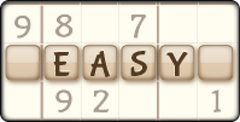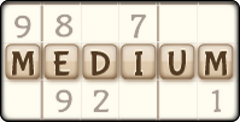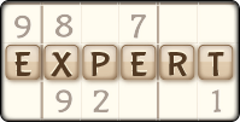How to Solve Sudoku Without Guessing: Mastering Logical Techniques
An initial look at any clean game of Sudoku might have some people imagine it's a game about guessing what numbers go where, and then correcting your mistakes when it doesn't make sense. However, solving Sudoku puzzles is not only entirely achievable without guessing, but you can typically win games a lot faster without it. The game is best played using logical techniques and deduction, and here, we're going to look at the steps you can take to master those techniques, helping you solve even the most challenging puzzles.
Understanding Logical Techniques
Sudoku is, at its core, a game about using logic. Your aim is to fill in a 9x9 grid numbered from 1 to 9 while making sure the number appears only once in each row, column, and 3x3 subgrid. Grid sizes and layouts can change, of course, but the focus on logic remains the same. Victory is won by deduction and systematic analysis of the puzzle, not trial and error.
The key to winning in Sudoku is understanding the various rules and their implications, mainly the following:
- If a number is already present in a row, column, or subgrid, it can't be repeated in the same section.
- Every blank cell has to be filled with a number between 1 and 9 in a way in keeping with rule 1.
Understanding these rules, you can develop the logical mindset that allows you to follow them to the only solution that the board allows. This requires you to build patience, attention to detail, and the ability to spot patterns and relationships across the grid. Many players utilize techniques based on these skills that allow them to play entirely without guessing. Indeed, guessing can lead to incorrect assumptions which only complicate the game, making it more difficult at later stages.
Identifying Key Patterns
Pattern recognition is one of the main skills you will rely on when playing Sudoku logically. These patterns act as clues, allowing you to fill in the pieces of the puzzle bit by bit.
Naked Singles
A naked single is a cell that only has one possible candidate number. For instance, if you have already filled in the numbers of a row from 1 to 8, then it can only be possible that the remaining free space is 9. Spend the opening minutes or a puzzle looking for those easy naked singles.
Hidden Singles
While not as easy to spot as naked singles, hidden singles are just as important. A hidden single is when a number can only fit into one cell in a specific row, column, or subgrid, even if the cell seemingly has multiple candidates. If a cell could fit either 4 or 5, but 5 cannot appear anywhere else in the row, column, or subgrid, then the cell must therefore be a 5.
Locked Candidates
These are when numbers are restricted to a specific row or column within a 3x3 subgrid. You can use them to eliminate possibilities elsewhere in the grid. For instance, if the number 5 can only fit into two cells in one subgrid, and both cells are in the same row, then you know that 5 can't appear on any other part of that grid in that row.
Box-Line Reduction
A variation of locked candidates, this technique involves eliminating potential candidate numbers for a cell, based on where they appear in overlapping rows, columns, and subgrids. If a candidate number, like 3, appears in only one row of a subgrid, then it can't appear in the same row in other subgrids, removing it as a candidate down that row.
X-Wing
An X-Wing pattern is made using four cells that form a rectangle, where a specific number has been eliminated as a candidate for all but two cells on two different rows and columns. By identifying X-Wings, you can quickly eliminate the number within from other places in the grid sharing the same rows and columns.
Using Pencil Marks Effectively
Rather than immediately aiming to fill in every blank cell, you should start by using pencil marks. These small notions indicate the potential candidates in each cell. By using them, you can quickly see which potential numbers can fit in each cell, making it easier to eliminate options as you deduce the puzzle.
Steps to Use Pencil Marks
- Start by filling in the pencil marks for an empty cell, listing all the possible numbers that can fit in there (i.e., that don't already appear in the same row, column, and subgrid as the cell.)
- Update your pencil marks, removing potential candidates as you find a place for them elsewhere in the puzzle. Keep your pencil marks up to date or they can get confusing quickly.
- Once you start to recognize which numbers are most likely to be relevant, it allows you to keep pencil marks simpler, avoiding filling in with unlikely numbers so that you're more easily able to read the puzzle.
Pencil marks are a vital visual aid, helping you track potential placements and spot patterns. Over time, you're likely to develop your own preferences and techniques for marking candidates, saving you time.
Applying Basic Strategies
Scanning
The opening of every game should start with you scanning the puzzle. Check the rows, columns, and subgrids for potential early placements, typically the naked and hidden singles that are easier to identify. This helps you eliminate impossible placements and narrow down possible solutions.
Cross-Hatching
This is a visualization method that helps you spot where numbers can't go. Image lines extending from existing numbers across rows and columns quickly narrow down the possibilities for empty cells.
Start With The Easy Numbers
The most constrained parts of the grid tend to be the ones that offer the most early solutions. Start with where there are fewer empty cells and this can cause a domino effect, simplifying the rest of the puzzle.
Leveraging Advanced Techniques
Swordfish
Similar to the X-wing technique, the Swordfish pattern applies across three rows and columns, instead, helping you eliminate candidate numbers from other cells. These are more useful for complex puzzles that can't rely on simpler techniques.
Naked Pairs/Triples
If you spot two or three cells in a row, column, or subgrid that share the exact same candidate numbers, then those same candidate numbers can't be used anywhere else on the same row/column/subgrid, allowing you to quickly eliminate options.
Hidden Pairs/Triples
This is when two or three numbers are restricted to the same set of cells, even if they have other candidates. For instance, if one cell on a row has 2, 3, and 5, and another has 2, 3, and 6, and none of the other cells have 2 or 3 as potential candidates, then you have a hidden 2 and 3 pair.
Coloring
Using different colors for candidate numbers allows people to quickly visualize relationships across the board, identifying any contradicting numbers and confirming placements so candidates can be quickly eliminated elsewhere.
Chain Techniques
Chain techniques are designed to help you test potential candidates. Testing a chain means working through the puzzle, by deducting whether or not a certain candidate works out fully. For instance, an "AIC" (Alternating Inference Chain) is a sequence of candidates where true/false relationships are analyzed to deduce placements or eliminations.
Avoiding Common Pitfalls
There are mistakes that are easy to make in a game of Sudoku that can make the puzzle harder to solve the further you get in. Here are a few examples:
- Guessing: Avoid guessing as much as you can. It typically leads to incorrect placements that then make it harder to logically deduce what fits in the other cells.
- Overlooking Obvious Moves: If you're stuck on difficult puzzles, go back to the basics. Scan the board to make sure you're not missing any naked or hidden singles.
- Overusing Advanced Techniques: The advanced techniques can help you, but they can also complicate the game. Don't hesitate to rely on the more basic methods in the early game, using advanced strategies only when needed.
Practice With Examples
In order to master Sudoku, you have to build your pattern recognition and intuition. These are what help you deduce the state of the puzzle more effectively. Work through puzzles of different difficulty levels to help you practice techniques of various levels. Through routine practice and analysis of puzzles that you have solved, you'll begin to build the confidence to help you tackle more challenging grids or to aim for the best times to complete puzzles.
Tips For Improving Accuracy
- Stay Organized: Keep your grid neat and clearly mark the cells you have solved. Erase any pencil marks you don't need anymore.
- Take Breaks: If a puzzle is getting frustrating, step away from it. Coming back at it with a fresh pair of eyes after a break can help you identify solutions you might have missed before.
- Learn From Your Mistakes: If you lose a game, try to identify what caused it. A misapplied strategy or mistaken assumption is often the culprit. Learning your bad Sudoku habits makes you less likely to repeat them.
- Use The Available Tools: Online Sudoku games offer tutorials and tools to help guide you toward the correct solutions. Don't use these to beat puzzles, but to build your own deductive skills.
Once you have gotten past the initial mistake of thinking that Sudoku is about guessing, the wonderful nuance of the game can open up to you. Get to know the rules, the techniques to deduct placements, and the tips above to really see why so many love the game.
Sudoku Levels
Seasonal Sudoku Games
More Games
Sudoku News
Disclaimer
DISCLAIMER: The games on this website are using PLAY (fake) money. No payouts will be awarded, there are no "winnings", as all games represented by 247 Games LLC are free to play. Play strictly for fun.





































